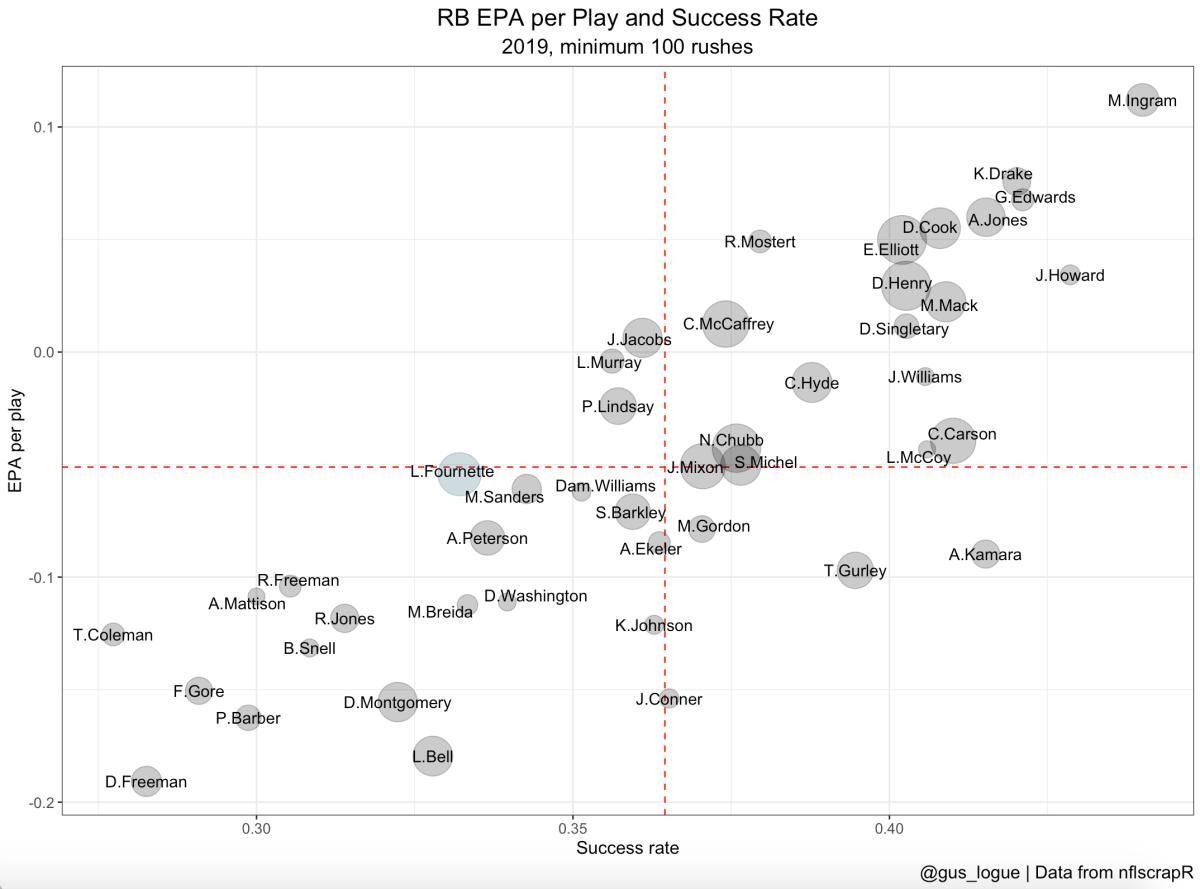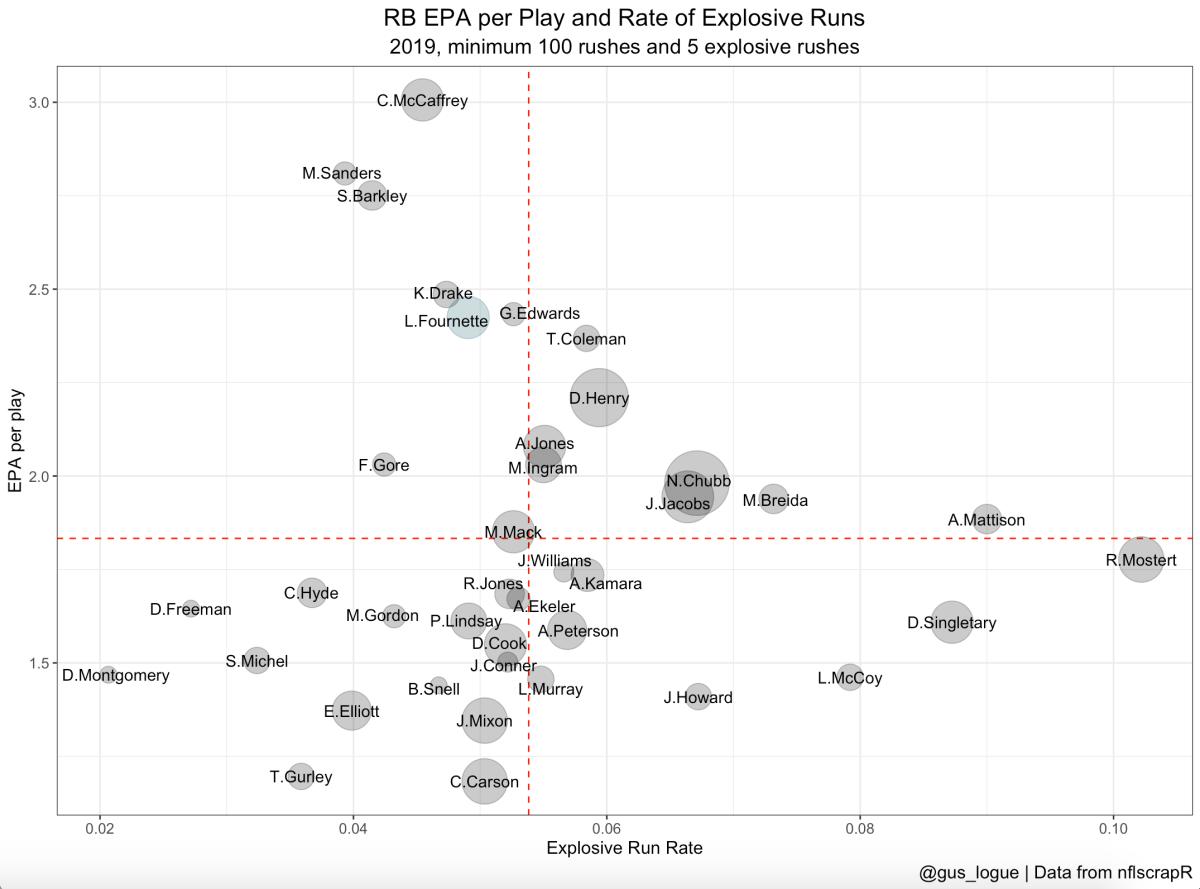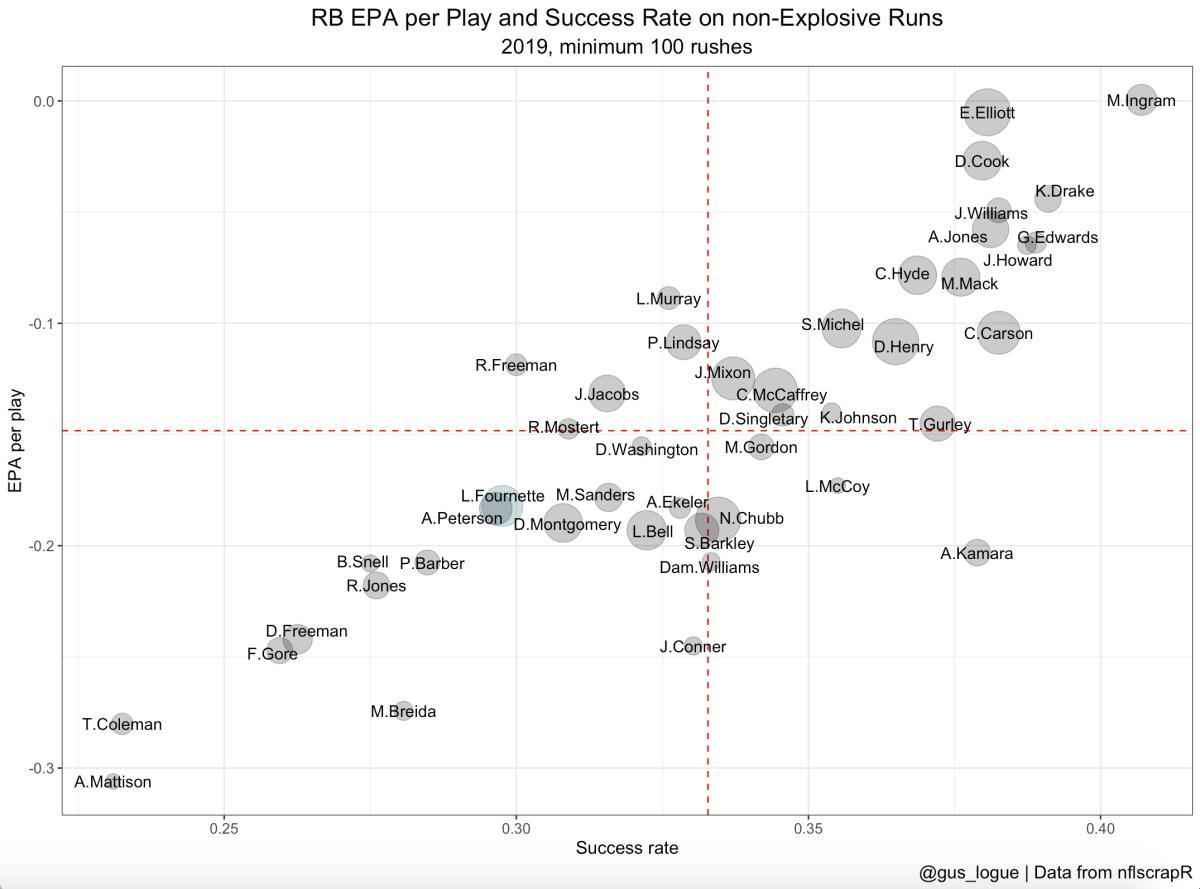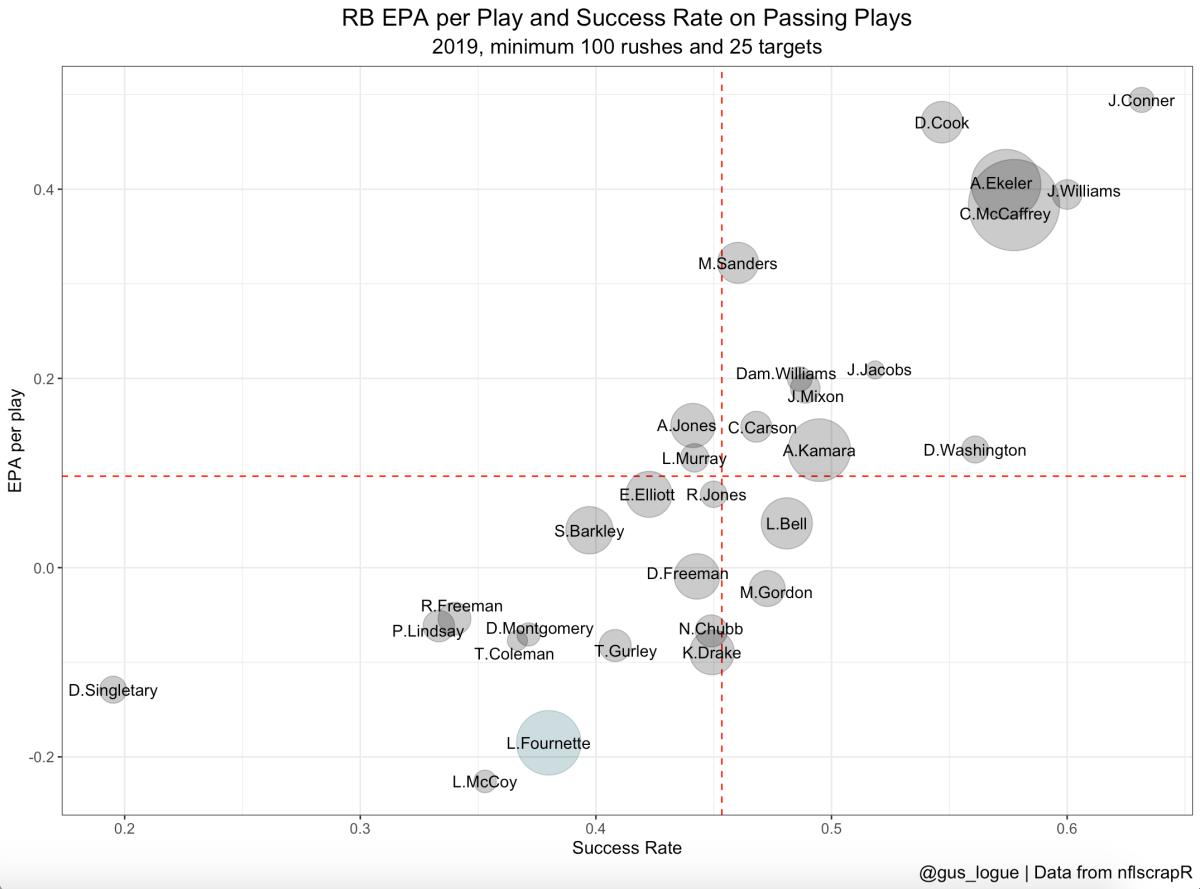What Does the Data Say About Jaguars RB Leonard Fournette’s 2019 Production?

Entering the 2020 NFL season, the Jacksonville Jaguars are yet again set to feature veteran running back Leonard Fournette as the centerpiece of their offense, a year following a season in which Fournette was seemingly one of the bright spots to a middling 6-10 team according to surface stats.
Fournette played in 15 of 16 games last season, the most of his three-year career. Fournette also ranked third in touches among all running backs and finished top-10 in rush attempts, rushing yards, receptions and receiving yards.
Unfortunately, the former fourth-overall draft pick did not play as well as his cumulative numbers may suggest. Fournette actually ranked on the opposite side of the spectrum in terms of efficiency last season.

Among 45 running backs with at least 100 rush attempts, Fournette ranked 23rd in Expected Points Added (EPA) per play and 35th in success rate (rate of positive EPA rushes). He also ranked 34th in Football Outsiders’ Defense-adjusted Yards Above Replacement (DYAR) metric and 41st in Pro Football Focus run grade. Even in yards per carry, a relatively outdated metric, Fournette ranked 26th. He simply was not an efficient rusher.
Fournette’s Inefficiency Explained
As evidenced by the chart above, Fournette’s inefficiency was a result of inconsistency: he produced an average EPA per play but noticeably below-average success rate. Fournette ranked seventh among all running backs in rushes of 15 or more yards (13) - which were significant boosts to his cumulative statistics - but he also ranked first in rushes of three yards or less (171) - which were significant blows to his advanced statistics.
Fournette’s ability to break off long runs last season is frankly not impressive- his long runs should have been expected considering the number of carries he received. The eight running backs with at least 250 carries last season, which includes Fournette, all had double-digit explosive runs (rushes of 15-plus yards). Fournette ranked sixth in explosive run rate among those running backs and 26th among all running backs.
As the chart below indicates, Fournette’s explosive run rate was below average. He did generate the eighth-highest EPA per play on such runs, but that only goes so far when calculating his overall efficiency since it came on just 13 of his 265 total rush attempts.

Meanwhile, Fournette’s efficiency took a dip on non-explosive runs, which were the vast majority of his running plays. He ranked bottom-eight among eligible running backs in the difference between EPA per play, success rate and yards per carry from all rushes to non-explosive rushes, meaning much of his production came on his explosive runs, which again, occurred at a below-average rate and too infrequently to have a significant impact on efficiency ratings.
Fournette ranked 28th in EPA per play and 36th in success rate on non-explosive runs, which were each below average as shown in the chart below.

Fournette’s 2019 inefficiency isn’t as black-and-white as production on explosive versus non-explosive runs, but it is a fair generalization. Fournette simply did not produce sufficient yardage on most of his carries. His EPA per play last season was -0.05, which means that on average, a rush by Fournette worsened Jacksonville’s chances to score on that drive.
Another factor to consider is red zone performance. Jacksonville struggled in the red zone last season, in large part because Fournette played poorly in that area. He ranked fifth in red zone carries but 54th in yards per carry, 56th in touchdown rate and 58th in success rate among 58 eligible running backs, per Sharp Football Stats.
Fournette scored just three touchdowns on 43 red zone carries in 2019 after scoring 12 on 49 carries the previous two years combined. Red zone performance and touchdown rate tend to be volatile from year to year, so Fournette was likely a bit unlucky last season, but his abysmal rankings are still alarming. His 1.1% overall touchdown rate ranked 41st among running backs and certainly didn’t aid his efficiency ratings.
Surrounding Factors
As data analytics continue to infiltrate the NFL, it is becoming clearer that running back performance tends to rely more on environmental factors as opposed to pure running back talent. So, it should be mentioned that Fournette’s environment was not favorable in Jacksonville- but Fournette still underachieved even considering his circumstances.
The Jaguars offensive line ranked 25th in PFF’s run blocking grade, yet Fournette ranked fourth in EPA per play and fifth in success rate among the seven lead running backs on worse PFF run blocking teams.
Fournette ran into a loaded box (eight-plus defenders near the line of scrimmage) on 31.7% of carries last season, the 10th-highest rate in the league according to Next Gen Stats. Yet Fournette ranked fifth in both EPA per play and success rate among the nine running backs with a higher loaded box rate.
The fact that Fournette runs behind a below-average offensive line and into loaded boxes are factors to keep in mind, but it certainly doesn’t excuse his performance and isn’t a significant cause of his inefficiency.
Receiving Efficiency
Fournette’s production was a similar story in the passing game. He had good production from a cumulative perspective - he ranked fifth in receptions and receiving yards among all running backs - but his production from an efficiency perspective was not good.
Among 48 running backs with at least 25 targets, Fournette ranked no better than 26th in yards per reception, yards per route, yards after catch per reception, passer rating when targeted, receiving DYAR and PFF receiving grade. As shown by the chart below, he also ranked below average in EPA per play and success rate on passing plays.

Fournette’s EPA per target was -0.19, meaning again that his involvement worsened Jacksonville’s chances to score on average. Jacksonville’s offense generated a negative EPA per play as a whole last season, so Fournette wasn’t necessarily dragging the team down, but he clearly didn’t help either.
Final Word
Many fans seem content with Fournette’s 2019 season and point to traditional statistics as evidence of a good year. But his ranking among the league’s leading cumulative rushers does not tell the full story, as Fournette was undisputedly an inefficient player.
Fournette did not produce successful rushes at an adequate rate, even considering his poor environment. While he did register a high number of explosive runs, it was at a below-average frequency and wasn’t enough to elevate his overall efficiency. He also didn’t add much value in the passing game despite leading the team in receptions.
Ironically, the only area Fournette seemed to succeed was health. He missed 30% of his games due to injury in the previous three years (going back to his final year at LSU) but missed only one game in 2019.
The Jaguars recently declined Fournette’s fifth-year option and reportedly shopped him to other teams during the NFL Draft. Considering the organization’s recent actions and his general inefficiency, it’s likely that the 2020 season will be Fournette’s last in Jacksonville
